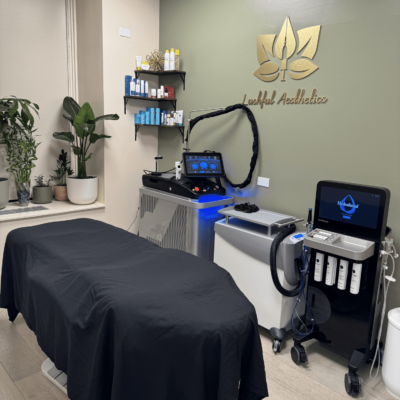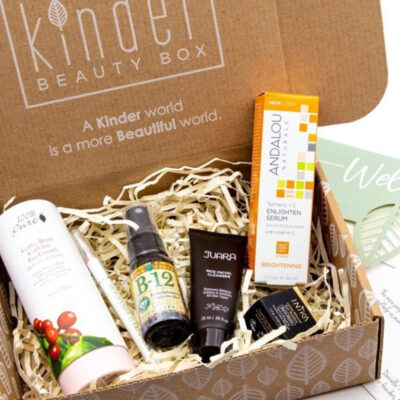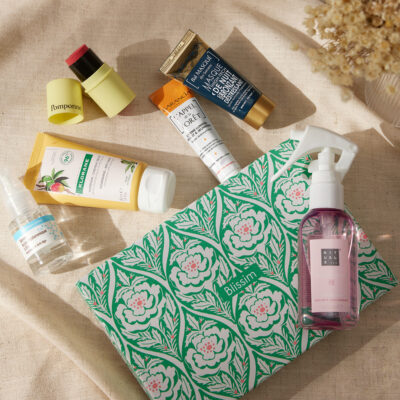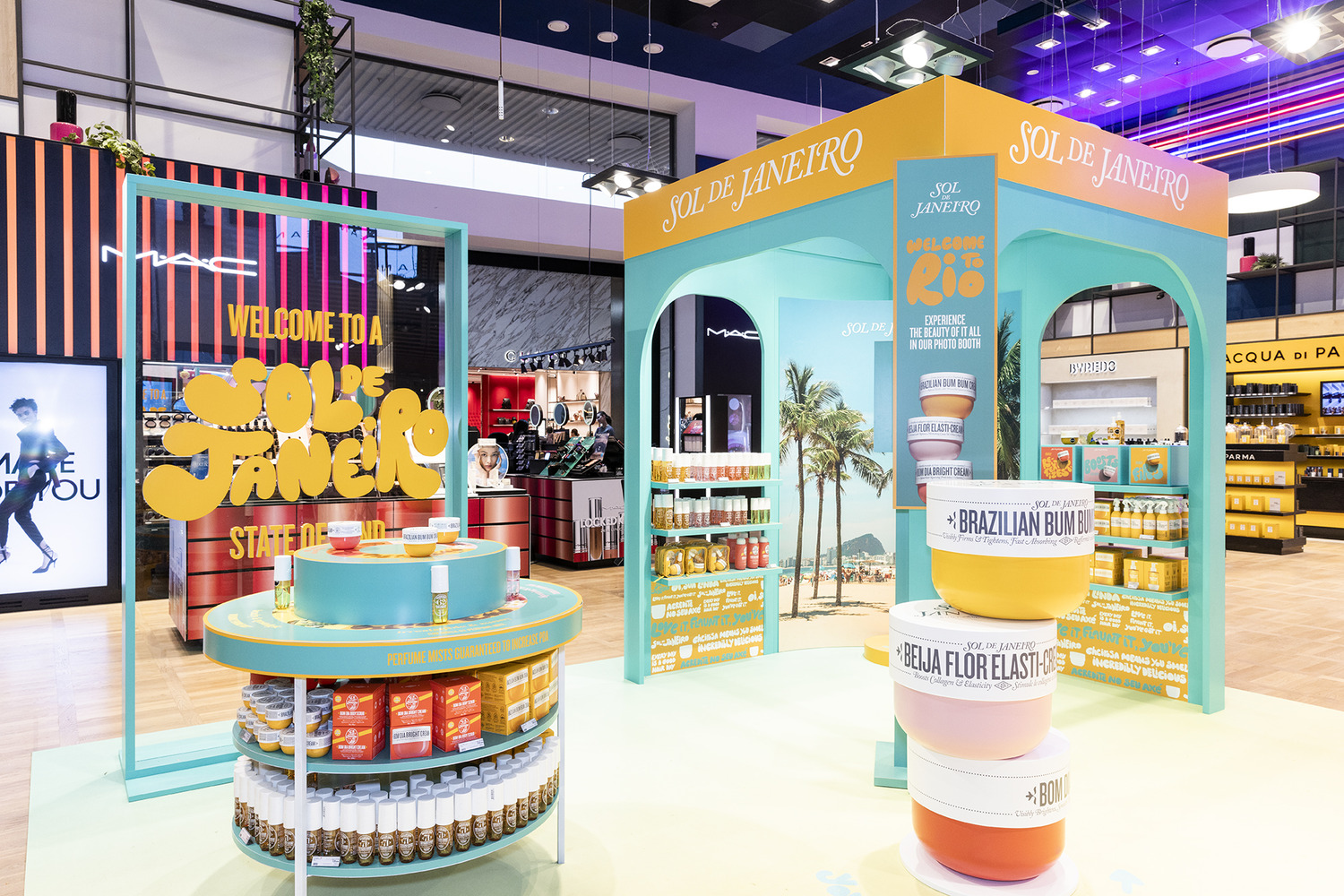
The Travel Retail Opportunity For Emerging Beauty Brands
It’s time for emerging beauty brands to explore travel retail, according to Gebr. Heinemann.
One of the largest travel retailers in the world, Hamburg-based Heinemann operates branded shops at 123 airports and 213 border crossings. It also counts 51 airlines and 240 cruise ships and ferries as distribution clients. The company uses Adit, a retail matchmaking service owned by Beauty Independent parent company Indie Beauty Media Group, to assist it with sourcing brands.
“The incredible advantage of travel retail is that every traveler is a potential customer as they are more or less inevitably exposed to a slew of diverse purchase offers on their journey,” says Sarah Rughöft, head of strategic buying for perfume and cosmetics at Heinemann. “The current steady growth in the number of passengers worldwide also increases the potential reach and customer base for a brand that is active within this industry.”
International travel has bounced back this year after the pandemic grounded the airline industry three years ago, causing eye-watering losses for the sector’s major players. The International Air Transport Association reports that global traffic has now reached 95.7% of pre-pandemic volume. In August, the trade association estimated that international travel had increased 50% year to date.
The recovery has helped the travel retail business return to nearly 2019 levels despite depressed Chinese travel dragging down the global market. In 2022, Heinemann racked up 3.8 billion euros or roughly $4.09 billion in sales for the year, an amount representing 79% of its 2019 sales. Competitors Dufry and Lagardère Travel Retail also posted large gains last year.
With travel retail gaining momentum, Beauty Independent spoke with Rughöft about attributes that emerging brands must possess to succeed in the channel, the company’s approach to bringing emerging beauty brands into its assortment and beauty categories registering strong sales at Heinemann Duty Free locations.
What should brands know about travel retail when considering entering it?
Contrary to common misconception, travel retail is a multifaceted and diverse sector that extends far beyond the airport environment. For instance, Gebr. Heinemann operates globally as both a retailer and wholesaler in a variety of distribution channels spanning airports, cruise ships and ferries, airlines and border shops. So, travel retail presents a unique chance for brands to connect with a diverse and international customer base through a single touchpoint.
However, it is essential to recognize that each channel comes with its unique characteristics and opportunities. Brands should consider this when venturing into travel retail as there is no one-size-fits-all solution, particularly when targeting multiple channels.
While travelers enjoy immersing themselves in travel retail shopping, the time available to them at the point of sale is often limited. Conversely, a traveler on a cruise ship tends to have more time to spend in a shop than someone at the airport. Again, the constraints depend on the respective sales channel. Some channels also incorporate e-commerce and catalogs. So, it’s important that brands focus on their bestselling products and provide easy-to-understand communication for customers by way of personalized consultation.
Within the perfume and cosmetics category, many purchases in travel retail are planned rather than impulse-driven. So, a certain level of brand awareness is key. Brands should strategically focus on entering regions where the brand is already known or target areas where a specific demographic that’s familiar with the brand tends to travel to and from. It is significant for a brand to understand its target audience and to tailor the retail presence accordingly.
Lastly, the commercial framework within the travel retail industry diverges significantly from the domestic market as it is often characterized by concession-based arrangements. These grant operators the rights to offer their products and services, for instance at an airport in exchange for monetary compensation. Consequently, the investment intensity required in travel retail tends to be on a high level compared to the domestic market, which brands have to be aware of when deciding on their entry strategy.

How has the channel changed since the pandemic?
The UN World Tourism Organization (UNWTO) has reported a significant resurgence in international tourism, rebounding to 80% of pre-pandemic levels. Europe, in particular, is a driver in this, reaching 90% versus 2019 during the first quarter of 2023. According to a study published by McKinsey in May, the travel retail channel is expected to grow by 10% each year until 2027, making it the second-fastest growing sales channel behind e-commerce, with an annual growth rate of 12%.
We’re also seeing this rebound in our own business. We achieved company-wide growth of 81% in 2022 compared to the previous year. We’re positive that we will achieve our targets for this year.
However, the volume of Chinese international travelers continued to be relatively low in the first half of 2023, only reaching about 20% compared to 2019 as they prioritized domestic travel. Undoubtedly, this has impacted travel retail as Chinese travelers have traditionally held a pivotal role in the industry due to their spending power.
Despite the pace of recovery being slower than expected, we are positive that Chinese travelers will return. The recent lifting of COVID testing requirements for in-bound passengers into mainland China is a good sign.
Travel retail has historically been dominated by legacy beauty brands, but emerging brands have started to make inroads. Why is it a good time for them to enter travel retail?
In the past, travel retail has had a tendency to focus on legacy brands, and these will continue to be an important part of the core assortment. During the pandemic, many retailers, including us, focused on the preservation of their core business in light of the severe restrictions and uncertainties. The testing and launch of new product groups or brands was put on the back burner.
However, as travel retail is on its way to reaching pre-pandemic levels, things are changing, and the diversification of the portfolio is moving back into focus. Recently, we’ve observed a particularly strong demand in the niche fragrance segment. We’re attributing this trend to consumers looking for more individuality and self-expression. It shows no signs of stopping.
Another factor in favor of entering travel retail at this point in time is the evolving customer demographics and shifting shopping behaviors. Surveys highlight that the younger generations, gen Z in particular, show less engagement in travel retail and are less likely to make a purchase in this shopping environment. As a result, retailers are looking for ways to make it an appealing channel for this demographic by diversifying and expanding the brand offer through the addition of emerging brands.
This younger generation in particular heavily relies on social media as a primary source of information and a place of discovery. Brands that have a strong online presence, a characteristic that many emerging brands possess, can capitalize on this and orchestrate an easier entry into the channel without establishing a physical presence in the domestic market first.
We have set ourselves the goal of turning our customers’ travel time into valuable time. A trendy and exciting assortment coupled with an engaging shopping experience that also gives customers the opportunity to get to know new brands and product categories plays a vital role in this approach. This is precisely why now is a good time for emerging brands to enter the travel retail market.
Could any beauty brand achieve success in travel retail or does the channel better suit those that have specific attributes?
Generally, travel retail can be a lucrative channel for most brands in gaining both revenue and recognition on a global level. Nevertheless, possessing some degree of brand awareness through the presence in the domestic market—be it in the home market or on a broader scale—or strong social media channels is a crucial attribute for a brand.
Experience has shown that categories and brands requiring detailed explanations and consultations can struggle in travel retail without proper support by both the brand and the retailer. Brands that have a straightforward selling point tend to navigate these challenges more effectively.
However, a captivating brand story is a key driver for success. Here, providing storytelling and an engaging shopping experience at the point of sale further facilitates a brand’s success in travel retail. This approach not only elevates brand visibility, but also creates a memorable encounter for travelers.
What’s Heinemann’s emerging brand philosophy?
Our conception of emerging brands might differ from what is prevalent in the domestic market. To us, these brands should already possess a certain level of awareness, whether it be through social media or the position in the domestic market, leading us to concentrate on those with minimal or rather no presence within the travel retail channel. With this in mind, we have added a diverse array of brands across various categories to our portfolio.
In response to the demand for niche fragrances, for instance, we have recently introduced brands such as Parfums de Marly, Initio Parfums Prives and Hermeticam. Their performances are promising so far. We’ve added brands like Grown Alchemist and Coola to our skincare assortment, while we also launched the French nail care brand Manucurist and the sustainable candle and diffuser brand Skandinavisk. We also work with Niche Beauty Lab, which distributes the brands Transparent Lab, Theramid and Acnemy, to capture a younger consumer group that values social media-driven brands.
In addition to this, we started a test-and-learn initiative in mid-June that enables us to try new categories and brands in dedicated placements within our shops for a defined period of time. In the event of a successful test phase, the distribution will be expanded within our network. This not only provides us with the opportunity to test our new brands, but also gives brands a chance to assess the performance of their products in the travel retail environment.
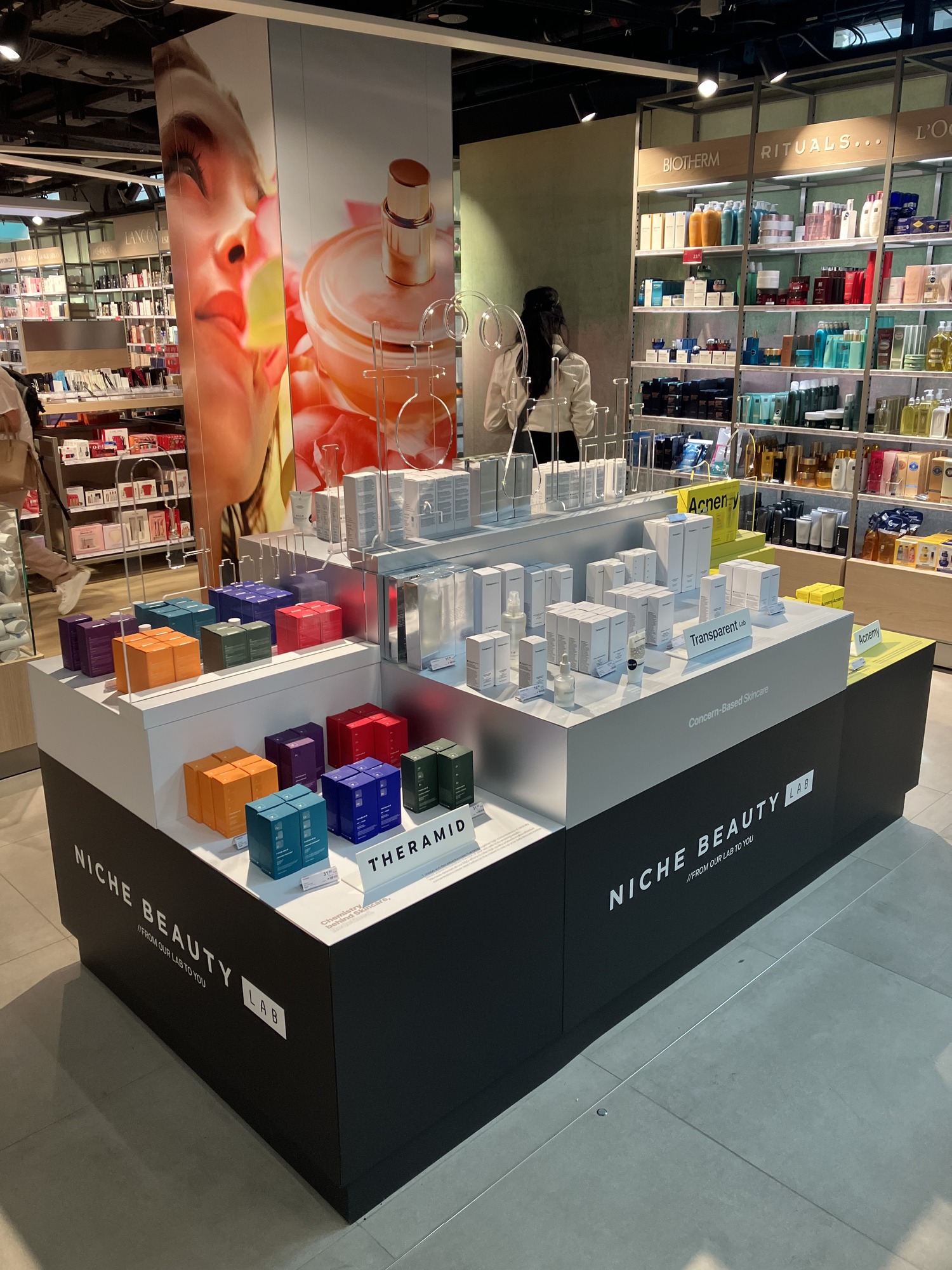
What qualities are you looking for when you curate emerging beauty brands?
As a matter of principle, we are always on the lookout for new brands that carry innovative products or respond to certain trend themes. At the same time, the individual needs of our markets and customers are important indicators for the selection of new and emerging brands.
Aside from brand awareness, two relevant attributes for new brands are flexibility and adaptability. Brands that are venturing into the channel need to be able to adapt to the different requirements of a certain channel or geographic region while preserving their core brand identity and strategy.
For instance, we as a company have a strong focus on our sustainable impact and the objective that a considerable part of our product assortment is sustainable. So, we are looking for brands that focus on sustainability at their core and that reflect this in ingredients and packaging and in their general business practices, too.
Generally, what’s performing well in beauty for Heinemann?
Fragrance continues to hold a dominant position within the category, contributing to approximately two-thirds of 2023’s total sales so far and growing more than 30% compared to the previous year. The niche fragrance brands are especially instrumental in driving this development.
Skincare shows the highest growth rate in beauty, growing 44% versus the first half of 2022. Sales for color cosmetics are still at a low level. However, the category is on the rise as well.
On the product side, sets that encompass a care routine or a free product, have proven to work well in the travel retail environment. Travel retail exclusive offerings are of particular significance in incentivizing customers to purchase due to their lack of availability in the domestic market. We’re also observing an increase in demand for base price offers and have expanded our assortment within this segment, particularly in skincare. Mini sizes are also not to be neglected as they provide customers with the opportunity to test luxury or new products while being convenient during travel.
How can brands support their business in travel retail?
Providing a customer with a memorable shopping experience is a key factor for both retailer and brands operating in the travel retail industry. “Retailtainment” has emerged as a defining concept. Of course, this also entails the participation of brands in marketing activities and promotions.
Furthermore, ensuring media coverage for launches is essential in drawing additional attention to the brand’s presence and activities in travel retail. This can be accomplished in cooperation with the retailer or operator, for instance, through the use of newsletters or press releases. Equally important are the brand’s own initiatives. A strong presence on social media and targeted online marketing can also be utilized to draw customers’ attention to the brand’s presence and activities in travel retail.
Lastly, the human factor is also highly relevant. Aside from the use of brand-dedicated staff, the provision of staff training is also a success factor for brands.

